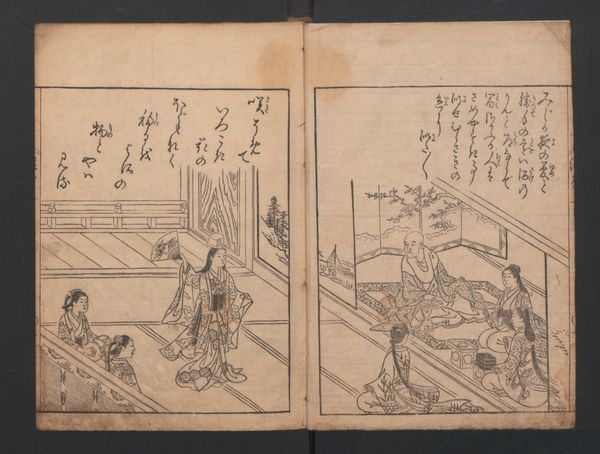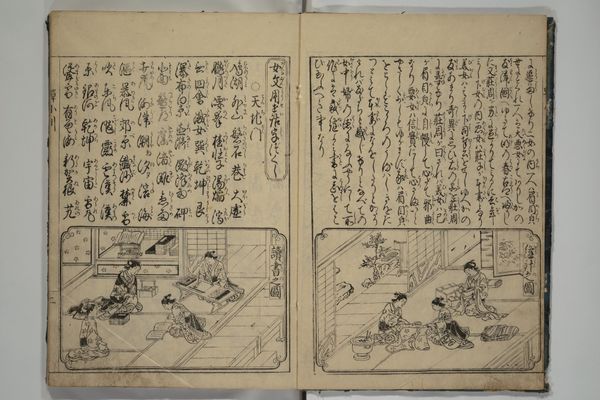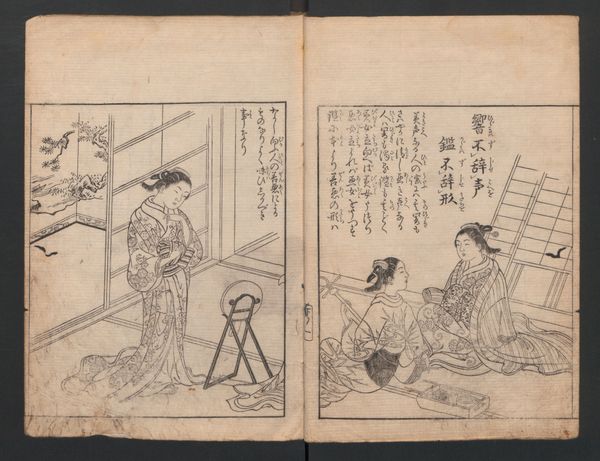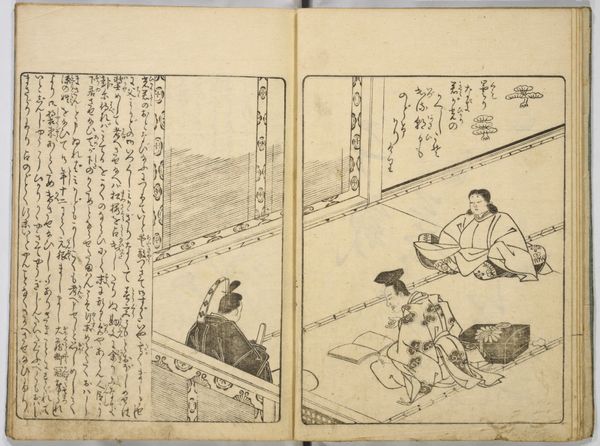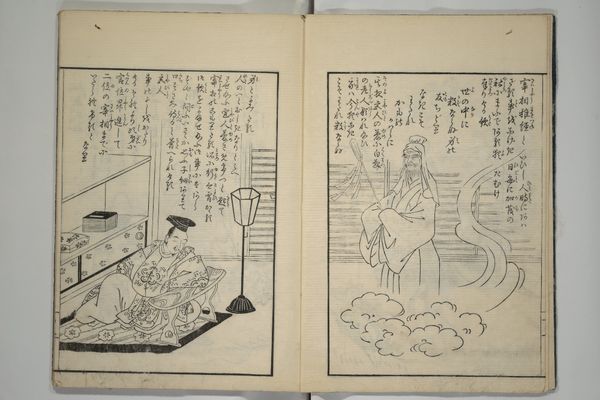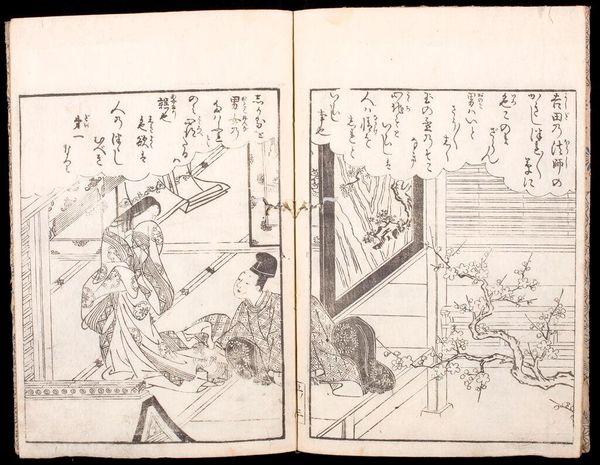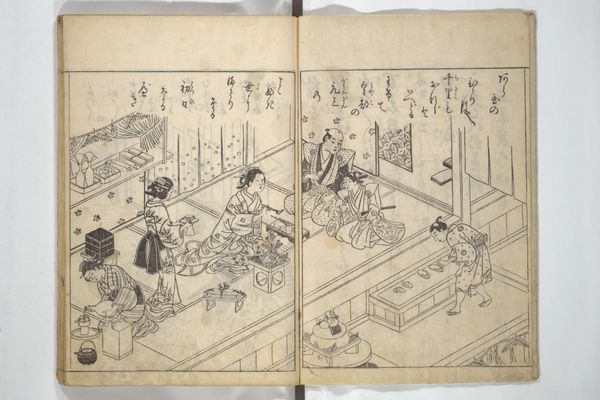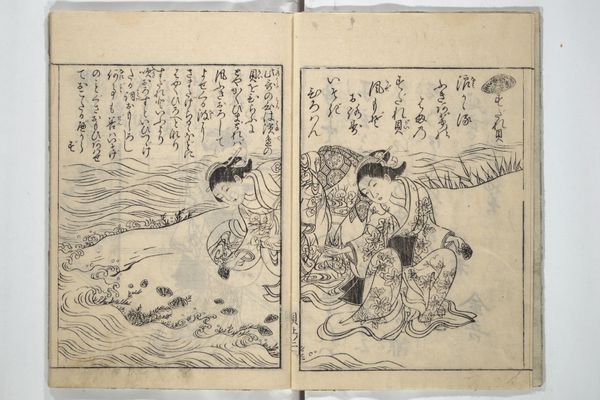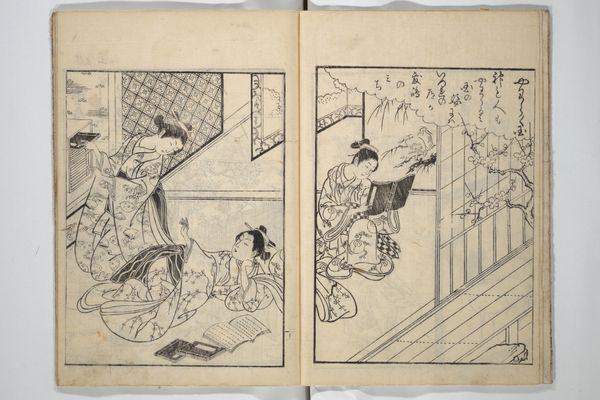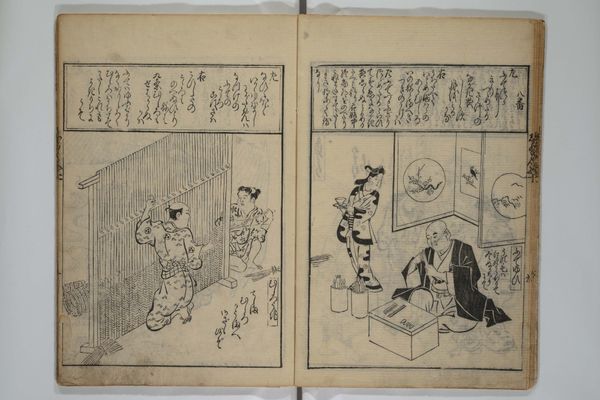
Forty-eight Instructive Poems in Alphabetical Order 1788
0:00
0:00
drawing, paper, ink
#
drawing
#
narrative-art
#
asian-art
#
ukiyo-e
#
figuration
#
paper
#
ink
Dimensions: Each: 9 × 6 1/4 × 1/16 in. (22.9 × 15.9 × 0.2 cm)
Copyright: Public Domain
Curator: Suzuki Harunobu, working in the late 18th century, created this drawing in ink on paper titled "Forty-eight Instructive Poems in Alphabetical Order," now residing at the Metropolitan Museum of Art. It presents a unique convergence of text and image, doesn't it? Editor: Indeed, the immediate impression is one of thoughtful composure and an almost scholarly austerity, despite its intimate scale. The stark black ink against the paper lends it a quality of immediacy, yet the figures possess a tranquil poise. What do you make of this duality? Curator: I think it is representative of the complex relationship between poetry, politics, and identity that defined the Edo period. We have this man in traditional dress indoors while outside there is some form of commoner working on a home. It creates a separation between the social spheres during that period, as defined by dress and daily tasks. Editor: That's insightful. Note the symbolic significance embedded in the figure seated indoors: the traditional garb of what may be a scholarly, noble member of Japanese society next to what appears to be the poetry, hinting at the convergence of intellect and status. Do you read that social positioning into it as well? Curator: Absolutely. This work isn't simply an illustration; it’s a commentary on social stratification and cultural memory being built and carried in poetry at that time. The placement of the figures as juxtaposed shows what daily life was like for different social classes, which reinforces cultural identity. Editor: Agreed. It also acts as a fascinating record of class in Japanese history through visual iconography. The outdoor figure seemingly at labor while an affluent one is reading the works; this comparison speaks volumes about the culture. It is such a poignant piece for something done simply in ink. Curator: Absolutely, by framing the ukiyo-e tradition through an intersectional lens, we uncover deeper social criticisms embedded within its aesthetic beauty. It reminds us that art always serves as a mirror, reflecting the power structures and identities of its time. Editor: Very true. It serves as a bridge between worlds: the symbolic world within the artwork, and the societal one that birthed it.
Comments
No comments
Be the first to comment and join the conversation on the ultimate creative platform.
